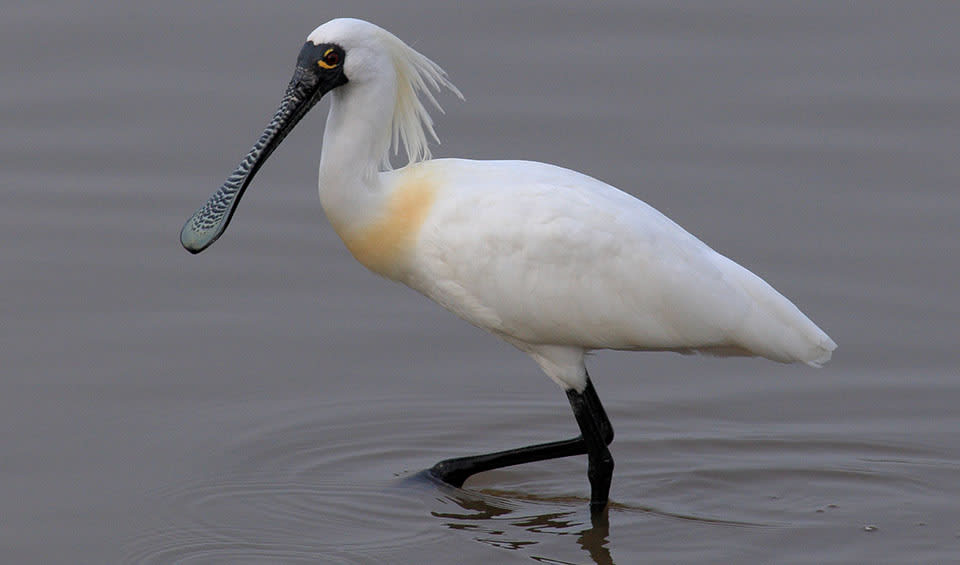Platalea – Spoonbills
Gold panners might have taken inspiration from these birds
Spoonbills are one of the most easily identifiable wading birds due to their distinctive spoon-shaped bills. This unique bill shape is an evolutionary adaptation that sets them apart from other wading birds and is crucial for their foraging strategy. There are six species of spoonbills across the world, inhabiting a variety of wetlands, including estuaries, marshes, tidal flats, and rivers.
The spoon-shaped bill of these birds is not just for show; it is a highly effective tool for feeding. As a spoonbill walks through shallow waters, it sweeps its bill from side to side in the water. Sensitive nerve endings inside the bill detect prey items, which typically include small aquatic animals such as crustaceans, aquatic insects, frogs, newts, and small fish. When a spoonbill feels a potential meal, it will snap its bill shut, trapping the creature inside.
Spoonbills are gregarious by nature, often seen feeding, flying, and roosting in flocks. They have a preference for feeding in the company of others, possibly because a group can stir up the water more effectively, making prey more accessible. Their social behavior extends to breeding; spoonbills nest in colonies, often with other waterbirds.
Their nests are constructed from sticks and reeds and are usually built in trees or shrubs, although some species will nest on the ground on isolated islands. Males typically take responsibility for gathering nesting materials while females arrange them into a nest. Both sexes are involved in incubation and rearing the young.
The reproductive strategy of spoonbills is serial monogamy, where a pair bonds for a single breeding season. During this time, they are highly territorial and the male will aggressively defend the nest against intruders. After the breeding season ends, the pair may separate and find new partners for the next season.
Species in this genus
Black-faced spoonbill
Officially designated as Natural Monument No. 205 and classified as a first-class endangered species in South Korea
Eurasian spoonbill
This bird is unmistakable for its namesake, spoon-shaped bill
Roseate spoonbill
An easily recognizable bird due to its pink body and spatulate bill




